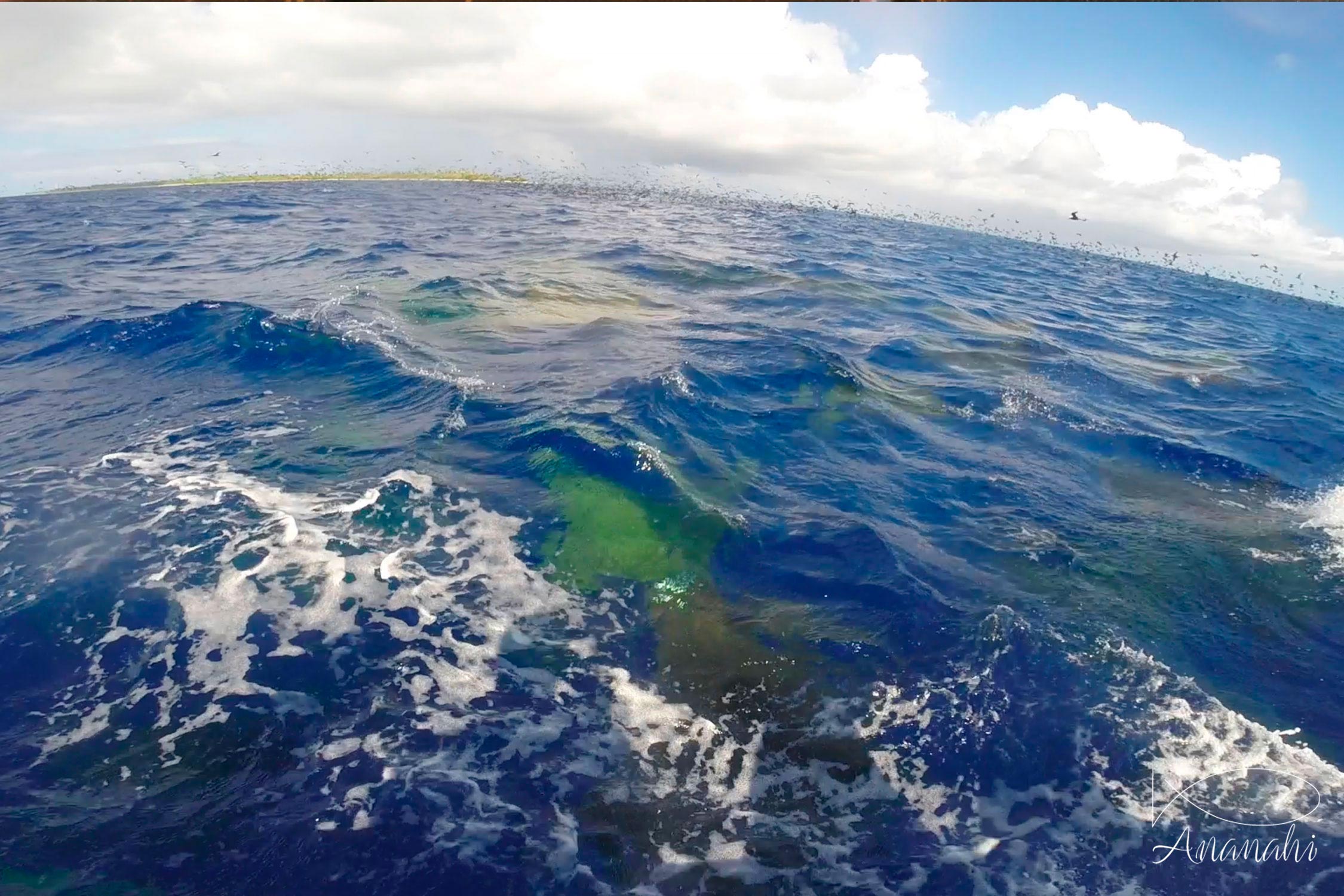
Scientific name: Mobula japanica
Size: Up to 9.8 feet wingspan
Color: Dark blue dorsal, dorsal face, white ventral
Distinguishing feature: A ventral mouth in the center of two straight cephalic horns (not like the manta). You can see a white spot at the end of the dorsal fin.
Where did we see it: French polynesia, Maldives

Scientific name: Mobula japanica
Size: Up to 9.8 feet wingspan
Color: Dark blue dorsal, dorsal face, white ventral
Distinguishing feature: A ventral mouth in the center of two straight cephalic horns (not like the manta). You can see a white spot at the end of the dorsal fin.
Where did we see it: French polynesia, Maldives
This ray is frequently seen in a shoal, from two to a few hundred.
It can also be seen jumping out of the sea water.
There are 9 different species of mobula rays, which are differentiated by details or by their geographical area. However, it is difficult to define these because the species are very similar.
Turtles are in economy mode when they are sleeping. If they are woken during night, they may not have enough air to return to surface.
So, please be careful during night dives!
The whale shark is the largest fish in the world!
Some whales are larger, but they are mammals, not fish!
Mammals have a horizontal tail.
Fishes have a vertical fin.